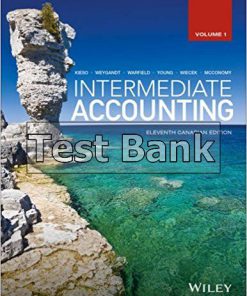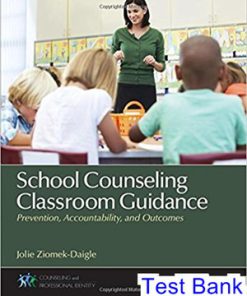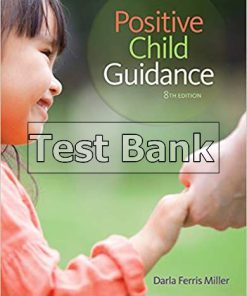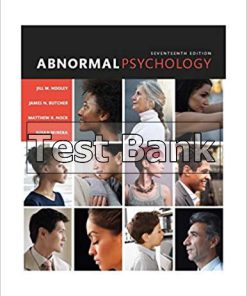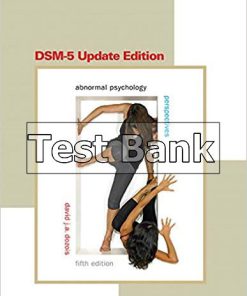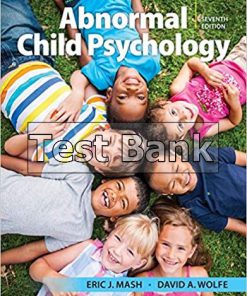Guidance Approach for the Encouraging Classroom 6th Edition Dan Gartrell Test Bank
$26.50$50.00 (-47%)
Guidance Approach for the Encouraging Classroom 6th Edition Dan Gartrell Test Bank.
You may also like
Guidance Approach for the Encouraging Classroom 6th Edition Dan Gartrell Test Bank
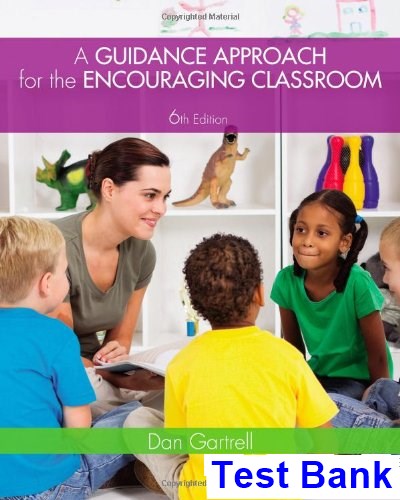
Product details:
- ISBN-10 : 1133947972
- ISBN-13 : 978-1133947974
- Author: Dan Gartrell
Addressing ages 3 to 8 years, A GUIDANCE APPROACH FOR THE ENCOURAGING CLASSROOM, 6th Edition, functions as a primary reference for professionals or as a resource for classes that address group management, the learning environment, child guidance, child behavior, challenging behavior, conflict management, and peace education topics.
Table contents:
- Preface
- Part 1: Foundations of a Guidance Approach
- Preview
- Ch 1: The Guidance Tradition
- Guiding Questions
- Key Concepts
- Introduction
- Beyond Discipline
- Pioneers of the Guidance Tradition
- Mid-20th-Century Influences: The Developmental and Self Psychologists
- The 1980s and Obedience-Based Discipline
- Beyond Discipline to Guidance
- Cultural Responsiveness: Guidance and Cultural Diversity
- Family–Teacher Partnerships: Parent Relations in the Guidance Tradition
- Summary
- Follow-Up Activities
- Recommended Readings
- Ch 2: Child Development, Brain Development, and Guidance
- Guiding Questions
- Key Concepts
- Introduction
- Piaget: A Foundation for the Study of Child Development
- Vygotsky: How the Adult Guides Development
- Erikson: Personal Development and the Classroom
- Gardner’s Multiple Intelligences: Education for Healthy Development
- Emotional Intelligence: Defining the Central Guidance Issue
- Brain Development and Nurturing Relationships
- Cultural Responsiveness: Guidance in a Diverse Society
- Family-Teacher Partnerships: A Climate for Partnerships with Families
- Summary
- Follow-Up Activities
- Recommended Readings
- Ch 3: Mistaken Behavior: Understanding Conflicts, Aggression, and Challenging Behavior
- Guiding Questions
- Key Concepts
- Beyond Misbehavior
- The Concept of Mistaken Behavior
- Relational Patterns: A Model for Social-Emotional Development
- Three Levels of Mistaken Behavior
- Mistaken Behavior, Aggression, and Challenging Behavior
- Cultural Responsiveness: Cultural Factors and Mistaken Behavior
- Family Partnerships: Communicating with Parents about Mistaken Behavior
- Summary
- Follow-Up Activities
- Recommended Readings
- Ch 4: Guidance in the Classroom
- Guiding Questions
- Key Concepts
- Introduction
- A Professional, Not a Technician
- Reducing the Need for Mistaken Behavior
- Taking a Solution Orientation
- Liberation Teaching
- Cultural Responsiveness: The Influence of Poverty
- Family Parnternships: Overcoming Obstacles
- Summary
- Follow-Up Activities
- Recommended Readings
- Part 2: Creating the Encouraging Classroom
- Preview
- Ch 5: Organizing the Encouraging Classroom
- Guiding Questions
- Key Concepts
- Preventing School Anxiety: The Encouraging Classroom
- Developmentally Appropriate Practice Today
- Learning Centers in the Encouraging Classroom
- Building the Classroom for Prosocial Development
- Cultural Responsiveness: Poverty, Guidance, and Linguistic Competence
- Family Partnerships: Encouraging Family Engagement with the Program
- Summary
- Follow-Up Activities
- Recommended Readings
- Ch 6: Managing the Encouraging Classroom
- Guiding Questions
- Key Concepts
- Introduction
- The Daily Program
- The Limits of Large Groups
- Managing Transitions
- Routines in the Encouraging Classroom: A Teacher’s Perspective
- Cultural Responsiveness : The Guidance Approach with Emergent Bilingual Learners
- Family Partnerships: Encouraging and Supporting Classroom Volunteers
- Summary
- Follow-Up Activities
- Recommended Readings
- Ch 7: Leadership Communication with the Group
- Guiding Questions
- Key Concepts
- Introduction
- Establishing Leadership
- Guidelines, Not Rules
- Encouragement, More Than Praise
- Discusing Inclusively
- Class Meetings: Sustaining the Encouraging Classroom
- Encouraging Friendliness
- Cultural Responsiveness: Turning Discriminatory Remarks Made By Children into Learning Experiences
- Family-Teacher Partnerships: Leadership Communication with Parents
- Digital Communication
- Summary
- Follow-Up Activities
- Recommended Readings
- Ch 8: Leadership Communication with the Individual
- Guiding Questions
- Key Concepts
- Introduction
- 1. Careful Listening
- Contact Talk
- The Compliment Sandwich
- Friendly Humor
- Friendly Touch
- Guidance Means Leadership with Other Adults
- Be There for the Children, Be There for Yourself
- Cultural Responsivenes: Fostering Inclusive Social Identities
- Family Partnerships: Leadership Communication in the Parent-Teacher Conference
- Summary
- Follow-Up Activities
- Recommended Readings
- Part 3: Solving Problems in the Encouraging Classroom
- Preview
- Ch 9: Conflict Management
- Guiding Questions
- Key Concepts
- Introduction
- Basics of Conflict Management
- Developmental Considerations in Conflict Management
- The Five-Finger Formula
- Teaching Conflict Management Skills
- Cultural Responsiveness/Family Partnerships: Understanding Four Dimensions of Diversity in Today’s
- Summary
- Follow-Up Activities
- Recommended Readings
- Ch 10: Problem Solving Mistaken Behavior
- Guiding Questions
- Key Concepts
- Introduction
- The Decision to Intervene
- Four Quick Intervention Strategies
- Behaviors Reported by Other Children
- Intervention Strategies When Follow-Up Is Needed
- Why Take the Time?
- Cultural Competence/Family Partnerships
- Summary
- Follow-Up Activities
- Recommended Readings
- Ch 11: Guidance Through Intervention
- Guiding Questions
- Key Concepts
- Introduction
- When Boys Have Conflicts
- When Conflicts Make Intervention Necessary
- Crisis Management Techniques
- Comprehensive Guidance /The Individual Guidance Plan
- When Teachers Feel Anger
- Cultural Competence/Family-Parent Partnerships: When Teachers and Parents Disagree
- Summary
- Follow-Up Activities
- Recommended Readings
- Ch 12: Liberation Teaching: A Guidance Response to Violence in Society
- Guiding Questions
- Key Concepts
- Introduction
- Societal Violence and the Classroom
- Liberation Teaching: The Guidance Response
- The Guidance Response to Bullying
- Liberation Teaching and Related Educational Practices
- Cultural Competence/Family-Teacher Partnerships: Liberation Teaching and Parent Engagement
- Summary
- Follow-Up Activities
- Recommended Readings
- Appendix A: The NAEYC Code of Ethical Conduct
- Appendix B: Technology and Interactive Media as Tools in Early Childhood Programs Serving Children f
- Appendix C: Individual Guidance Plan Worksheet
- Glossary
- References
- Index
People also search:
Guidance approach for the encouraging classroom 6th edition
A guidance approach for the encouraging classroom 6th edition pdf
What are guidance strategies
How do you provide guidance to students
Guidance approach for the encouraging classroom 6th edition free download


